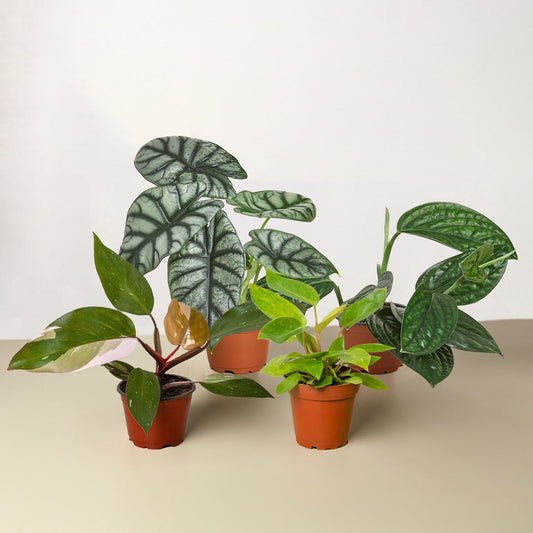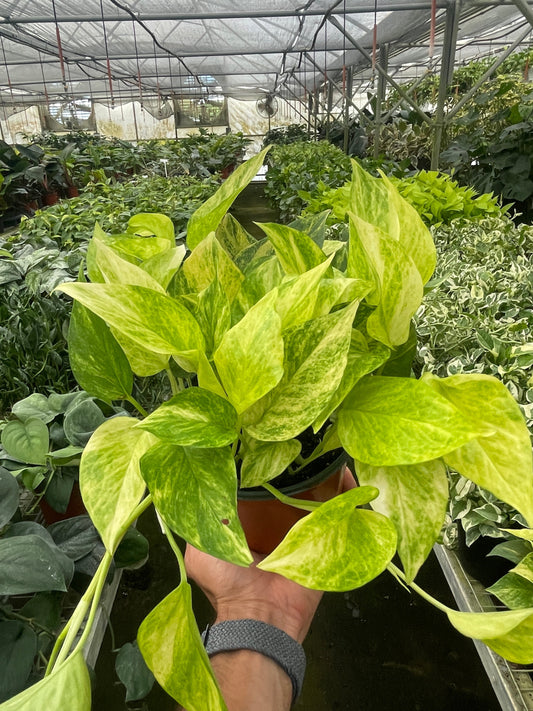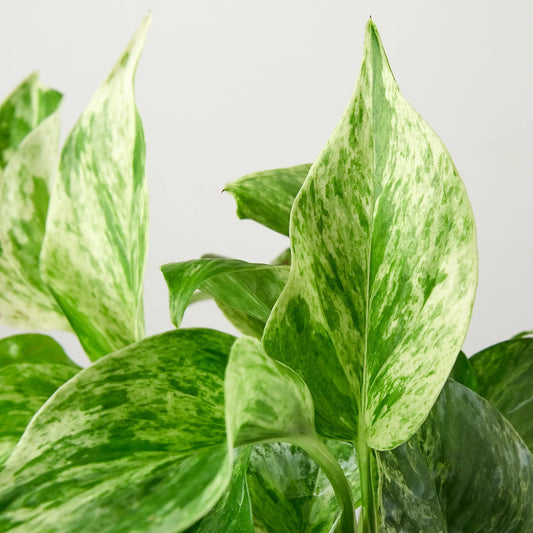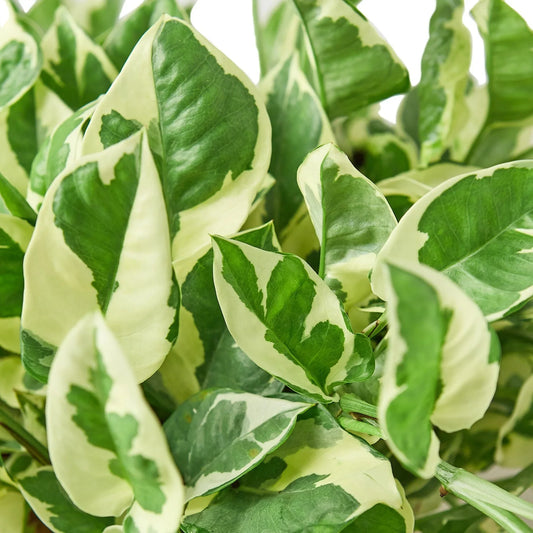Common Rubber Tree Pests (And What To Do About Them)
Cafe Planta Team
Rubber trees, with their lush leaves and air-purifying qualities, are a favorite among plant lovers. However, just like any other houseplant, they can fall prey to a variety of pests. These little invaders can be a nuisance, but don't worry—we'll guide you through identifying and managing them.
In this article, we'll look at some of the most common pests that might visit your rubber tree and discuss practical steps you can take to keep your plant healthy and thriving. From identifying tell-tale signs of infestation to exploring natural remedies and preventative measures, we’ve got you covered. Let’s get started!
Spider Mites: The Tiny Trouble Makers
Spider mites are like the ninjas of the pest world—they're tiny, sneaky, and can wreak havoc before you even realize they’re there. These pests are particularly fond of dry environments, making rubber trees in dry indoor conditions a prime target.
Spider mites are incredibly small, often requiring a magnifying glass to spot. They tend to create fine webbing on the underside of leaves, which can be a tell-tale sign of their presence. You might also notice that the leaves start to look speckled or dusty, which are signs of these mites feeding on your plant's sap.
So, what can you do about them? Here are some steps to tackle a spider mite infestation:
- Increase Humidity: Mites thrive in dry conditions, so increasing humidity can make your plant less hospitable to them. A humidifier or regular misting can help.
- Inspect and Wash: Check the leaves regularly and wash them with a gentle stream of water to dislodge the mites.
- Soap Spray: A mild soap spray can be effective. Mix a few drops of dish soap with water and spray on the affected areas. Always test on a small area first to ensure it doesn’t damage the plant.
- Introduce Predators: Ladybugs and predatory mites can be natural enemies of spider mites. Introducing them to your plant environment can help control the population.
Aphids: The Sap Suckers
Aphids might be tiny, but they have a large appetite for sap. These pear-shaped insects can range in color from green to black, making them sometimes tricky to spot against your rubber tree's leaves.
Aphids love new growth, so if you notice your plant's new leaves curling or yellowing, it might be time to inspect for these pests. They also leave behind a sticky residue known as honeydew, which can attract ants and lead to sooty mold—a black, sooty fungus that can grow on the honeydew.
Here’s how you can manage aphids on your rubber tree:
- Manual Removal: For small infestations, simply wiping them off with a damp cloth or spraying them with water can be enough.
- Neem Oil: This natural insecticide can be effective against aphids. Mix neem oil with water and apply it to the affected areas.
- Natural Predators: Like spider mites, aphids have natural predators such as ladybugs, which can be introduced to manage the population.
- Plant-Based Sprays: Garlic, cayenne pepper, or even essential oil sprays can deter aphids when used correctly.
Scale Insects: The Armor Plated Pests
Scale insects are a bit like tiny armored tanks; they attach themselves to the plant and form a protective shell. These pests can be particularly tricky because once they attach, they don’t move much, making them easy to overlook.
You might notice yellow spots on the leaves or a sticky substance on the plant or surrounding surfaces, which is a sign of their presence. If you look closely, scale insects resemble small brown or tan bumps on the stems or leaves.
To deal with scale insects, try these methods:
- Manual Removal: Use a cotton swab dipped in alcohol to gently rub off the scales. This method is time-consuming but effective.
- Horticultural Oil: Spraying horticultural oil suffocates the insects. Ensure you cover all parts of the plant for it to be effective.
- Pruning: If only a few leaves or stems are affected, pruning them can prevent the spread of these pests.
Mealybugs: The Fluffy Fiends
Mealybugs are among the more recognizable pests, thanks to their white, cotton-like appearance. They feed on plant sap and can weaken your rubber tree over time.
These pests love to hide in leaf joints and can cause leaves to become yellow and wilt. The sticky substance they excrete can also lead to sooty mold, similar to aphids.
Here’s what you can do to manage mealybugs:
- Isolation: If you suspect mealybugs, isolate the affected plant to prevent them from spreading.
- Soap and Water: A mixture of dish soap and water can be sprayed onto the affected areas to help dislodge these pests.
- Neem Oil: This is effective against a range of pests, including mealybugs. Regular application can help keep them at bay.
- Alcohol Wipes: Gently wiping the bugs with alcohol can kill them on contact. This method works well for small infestations.
Thrips: The Tiny Terrors
Thrips are slender, winged insects that can cause significant damage to your rubber tree if left unchecked. They feed by puncturing plant cells and sucking out their contents, leaving behind silvery streaks or spots on leaves.
These pests can be particularly challenging because they reproduce quickly and are excellent at hiding. You might notice leaves looking distorted or discolored, which are signs of thrip activity.
To tackle thrips, consider these strategies:
- Regular Inspection: Keeping a keen eye on your plant can help catch thrip infestations early.
- Sticky Traps: Blue or yellow sticky traps can capture adult thrips and help monitor their population.
- Insecticidal Soap: This can be sprayed directly onto the plant, targeting the thrips and reducing their numbers.
- Pruning: Removing heavily affected leaves can prevent further spread.
Whiteflies: The Fluttering Invaders
Whiteflies are small, moth-like insects that can quickly become a problem if not addressed. They congregate on the underside of leaves and feed on plant sap, leading to yellowing and wilting leaves.
When disturbed, they often take flight, appearing as a cloud of tiny white bugs. Like aphids and mealybugs, they also produce honeydew, which can lead to sooty mold.
Here’s how to manage whiteflies:
- Vacuuming: A small handheld vacuum can be used to suck up adult whiteflies.
- Soap Sprays: Regular applications of insecticidal soap can kill whiteflies and their larvae.
- Reflective Mulch: This can deter whiteflies by confusing their sense of direction.
- Natural Predators: Introducing predators like ladybugs or lacewings can help control the population.
Fungus Gnats: The Soil Dwellers
Fungus gnats might not directly harm your rubber tree, but they can be a nuisance. These tiny, mosquito-like insects thrive in moist soil and can indicate overwatering.
Their larvae feed on organic matter and roots in the soil, which can indirectly affect plant health. You might notice these pests flying around the base of your plant or crawling on the soil surface.
To manage fungus gnats, try these approaches:
- Let the Soil Dry: Allowing the top inch of soil to dry out can disrupt the life cycle of fungus gnats.
- Sticky Traps: Yellow sticky traps can catch adult gnats and help monitor their population.
- Hydrogen Peroxide: A mixture of hydrogen peroxide and water can be used to water the plant, killing larvae in the soil.
- Beneficial Nematodes: These microscopic worms can be introduced to the soil to feed on gnat larvae.
Preventative Measures: Keeping Pests at Bay
While knowing how to deal with pests is essential, preventing them in the first place is even better. A few proactive steps can make a big difference in keeping your rubber tree healthy and pest-free.
Here are some tips to help prevent pest infestations:
- Regular Inspection: Regularly inspecting your plants can catch issues early and prevent major infestations.
- Proper Watering: Avoid overwatering, as moist conditions can attract pests like fungus gnats.
- Clean Environment: Keeping the area around your plants clean can reduce the likelihood of attracting pests.
- Healthy Soil: Using high-quality soil and ensuring proper drainage can help prevent pest problems.
- Quarantine New Plants: Isolating new plants for a few weeks can prevent introducing pests to your existing collection.
Final Thoughts
Dealing with pests on your rubber tree might seem daunting at first, but with the right knowledge and approach, you can manage and prevent infestations effectively. From spider mites to mealybugs, knowing how to identify and treat these common pests is crucial to keeping your plant healthy.
At Cafe Planta, we're passionate about helping you care for your plants. Whether you're looking for new houseplants or need advice on plant care, we’ve got you covered. Feel free to reach out via email or Instagram. We believe in the power of plants to bring people together and inspire a connection with nature.



















